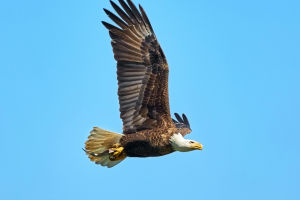The lion, a large member of the cat family, is a magnificent animal that inhabits Africa and Asia. Lions are the only cats in the world that exhibit dimorphism.
These animals prefer to live in savannas and grasslands, although they can also be found in shrublands and dry forests. Although lions were once found in many parts of the world, their natural habitats have now shrunk considerably.
Lions are the second-largest cats, with tigers being the largest, and they are the largest predators in Africa. Male lions can grow to be up to 1.80 meters long, stand about 1.20 meters tall at the shoulder, and weigh an average of 225 kilograms.
Female lions, on the other hand, are typically 1.60 meters long, about 1 meter tall at the shoulder, and weigh around 150 kilograms. The largest lions can be found in southern Africa, while the smallest are found in Asia.
Male lions have long, flowing manes that range in colour from light brown to black. The manes extend to their shoulders and chest, and male lions with longer, darker manes are often more attractive to lionesses. Male lions that live at the northern and southern ends of the African continent have the most developed manes, which extend to their backs and abdomens. These lions are also the largest.
Lions are primarily nocturnal animals, although they may be active during the day as well. They generally operate in a specific territory that is defended by adult male lions. They are capable of hunting large prey such as bison, antelope, zebra, and even young hippos, elephants, and giraffes. However, they also prey on small mammals and birds.
One of the most distinctive features of lions is that they are social animals. A pride typically consists of 4-12 related lionesses, their offspring, and 1-6 males. These male lions are often related to each other, such as brothers.
The size of pride is determined by the availability of food and the conditions of its habitat. Lion pride in East Africa tend to be larger because food is abundant in that region. The largest pride may contain 30 or more members, but most pride have around 15 members. Smaller pride are also common. Members of pride do not always stay together, but they share territory and usually get along well.
Lions are currently facing a variety of threats, including habitat destruction, human activities, illegal hunting, and infectious diseases.
As a result, the International Union for Conservation of Nature (IUCN) has listed lions as a vulnerable species. African lion populations have declined significantly over the last few decades, with an estimated 20,000 remaining in the wild.
Protecting lions requires the efforts of various groups, including governments, conservation organizations, social organizations, and individuals. Some measures that can be taken to protect lions include:
Habitat protection: Taking measures to prevent illegal logging and grassland wildfires, and maintaining the lion's habitat and the balance of the food chain.
Crackdown on illegal hunting: Strengthening the crackdown on illegal hunting, developing stricter laws and regulations, and increasing law enforcement.
Publicity and education: Raising public awareness and understanding of the importance of protecting lions and other wild animals, and promoting conservation awareness and action.
Establishment of protected areas: Designating and establishing lion-protected areas, implementing scientific management and protection measures, and ensuring the survival and reproduction of lions.


